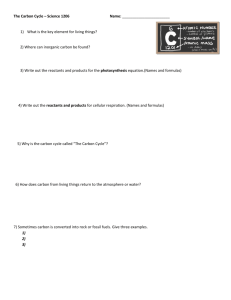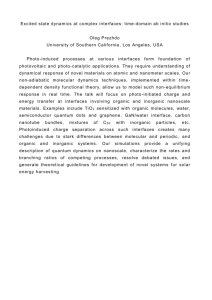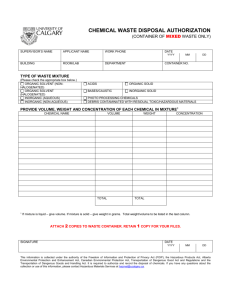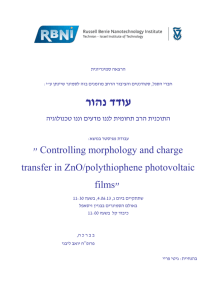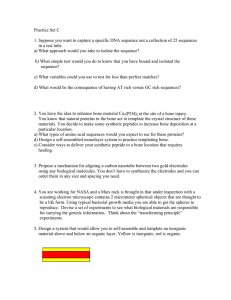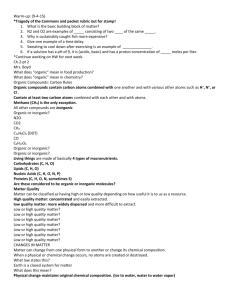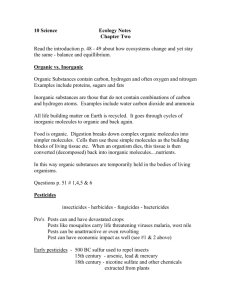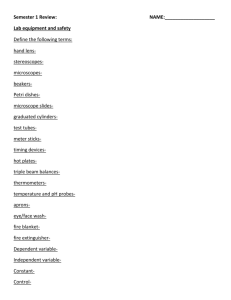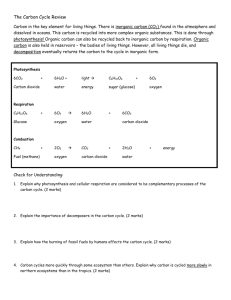Answers to UNIT REVIEW
advertisement
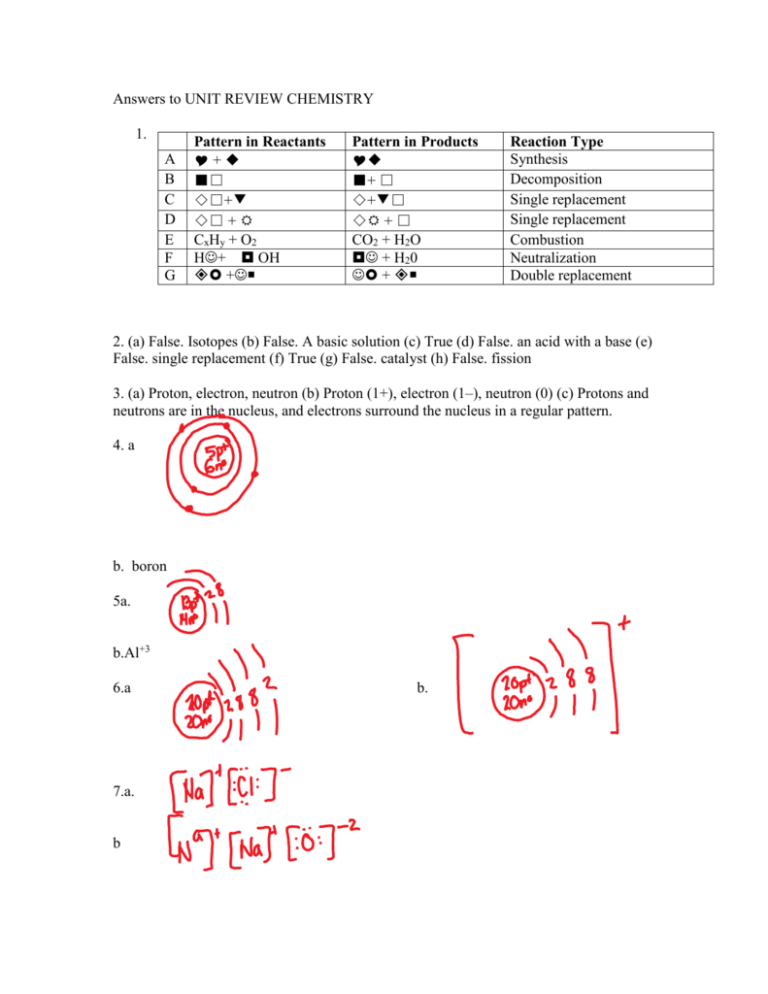
Answers to UNIT REVIEW CHEMISTRY 1. A B C D E F G Pattern in Reactants +◆ ■□ ◇□+▼ ◇□ + CxHy + O2 H+ OH + Pattern in Products ◆ ■+ □ ◇+▼□ ◇ + □ CO2 + H2O + H20 + Reaction Type Synthesis Decomposition Single replacement Single replacement Combustion Neutralization Double replacement 2. (a) False. Isotopes (b) False. A basic solution (c) True (d) False. an acid with a base (e) False. single replacement (f) True (g) False. catalyst (h) False. fission 3. (a) Proton, electron, neutron (b) Proton (1+), electron (1–), neutron (0) (c) Protons and neutrons are in the nucleus, and electrons surround the nucleus in a regular pattern. 4. a b. boron 5a. b.Al+3 6.a 7.a. b b. c. d 8. Covalent 9. The mass of the reactants is equal to the mass of the products according to the law of conservation of mass. 10. The pH scale measures the acidity levels in solution. 11. (a) 7 (b) Less than 7 (c) Greater than 7 12. (a) An acid has one or more H on the left side of the formula, as in phosphoric acid (H3PO4). Organic acids have H on the right side of the formula, as in acetic acid (CH3COOH). (b) A base has an OH on the right side of the formula and a metal on the left, as in Mg(OH)2. 13. A salt 14. Acid-base indicators 15. (a) 5 (b) 11 (c) 6 16. (a) Yellow (b) Blue (c) Green 17. (a) Increased (b) 10 times 18. (a) Hydrochloric acid, HCl (b) Sodium hydroxide, NaOH (c) Sulfuric acid, H2SO4 19. (a) Basic (b) Acidic 20. (a) The term “organic compound” refers to almost all carbon-containing compounds; exceptions include carbon dioxide, carbon monoxide, and ionic carbonates, which are considered inorganic. (b) The term “inorganic compound” refers to compounds that generally do not contain carbon; the few exceptions include carbon dioxide, carbon monoxide, and ionic carbonates, which, despite containing carbon, are considered inorganic. 21. (a) A hydrocarbon is a compound containing the elements carbon and hydrogen. (b) Methane is used in heating, ethane is used in manufacturing, and propane is used in camp fuel. 22. Carbon, hydrogen, and oxygen 23. (a) Organic (b) Inorganic (c) Inorganic (d) Organic (e) Inorganic (f) Inorganic (g) Organic (h) Inorganic 24. (a) Synthesis (b) Synthesis (c) Decomposition (d) Combustion (e) Neutralization (f) Neutralization (g) Double replacement 25. (a) Ca + CuF2 → CaF2 + Cu (b) Rb + O2 → Rb2O (c) C3H7OH+ O2 → CO2 + O2 (d) Cl2 + PbI4 → PbCl4 + Cl2 (e) Li2O → Li + O2 (f) HF + Ca(OH)2 → CaF2 + H2O (g) Ba + Ni(NO3) 2 → Ba(NO3) 2 + Ni (h) Al + I2 → AlI2 (i) AgNO3 + Na2CrO4 → Ag2CrO4 + NaNO3 26. (a) Temperature (b) Concentration (c) Concentration (d) Catalyst (e) Surface area (f) Oxygen (Possibly temperature too, because the flame temperature likely increases. However, the mixture is given extra oxygen so that the iron in the steel will also oxidize, which is a concentration effect.)

